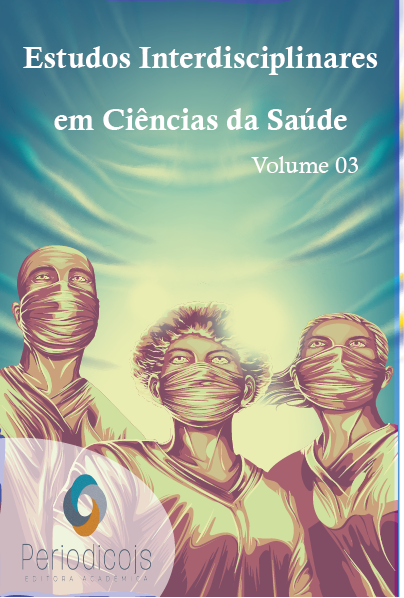Abstract
The present Course Conclusion Work, whose title is: “Muay Thai and its application in the treatment of chemical dependents in the rehabilitation clinic”, was conceived with the aim of presenting the general benefits of the practice of the Muay Thai martial art, as a tool assist in the treatment of chemical dependency within rehabilitation clinics. The objective is to provide knowledge about the possibility of relating physical exercise to the martial art, stimulating the search for a better quality of life, giving new meaning to values, changes in habits, and the awareness that it is possible to obtain pleasure through healthy means and alternatives. To demonstrate the benefits of Muay Thai in the treatment of chemical dependents, this work was developed from the methodology of bibliographic research in a qualitative perspective. The work also used the types of research of literature review and systematic review. The study concluded that it is possible to make use of the martial art associated with the treatment of addiction as an auxiliary alternative, as well as it is necessary to continue with research addressing the proposed theme, always looking for alternatives to reduce risks and damages.
References
Alcoólicos Anônimos. (1978). A história de como muitos milhares de homens e Mulheres se recuperaram do alcoolismo, Centro de Distribuição de literatura de A.A. para o Brasil.
Alvaes, L.; Mariano, A. (2007) Muay Thai. Boxe Thailandês. São Paulo. On Line editora. Andrade RV, Silva AF, Moreira FN, Santos HPS, Dantas HF, Almeida IF, Lobo LPB, Nascimento MA. (2003). Atuação dos neurotransmissores na depressão. Rev. Bras. Ciênc. Farm. [periódico na Internet].
Antunes, H.K.M.; Santos, R.F.; Cassilhas, F.; Santos, R.V.T.; Bueno, O.F.A.; Mello, M.T. (2006). Exercício físico e função cognitiva: uma revisão. Revista Brasileira de Medicina do Esporte, São Paulo, v.12, n.2, p.108-14.
Brasília: Secretaria Nacional de Políticas sobre Drogas. (2010). Glossário de álcool e drogas.
Cardoso, R. M. M. (2006) Só por hoje: um estudo sobre Narcóticos Anônimos, estigma social e sociedade contemporânea. 113 p.
Carnaval, Paulo Eduardo. (1997). Medidas e avaliações: em ciências do esporte. 2 ed. Rio de Janeiro: Sprint.
DSM -5. (2013). Diagnostic and Statistical Manual of Mental Disorders.
Doron, R.; Parot, F. (orgs.) Psicologia Clínica. (1998) Dicionário de Psicologia. Vol. I. São Paulo: Ática.
Federação Portuguesa de Kick Boching e Muay Thai. (2008). Regras de Arbitragem de Muay Thai FPK/IFMA.
Fernández-Ríos, L., & Buela-Casal, G. (2009). Standards for the preparation and writing of Psychology review articles. International Journal of Clinical and Health Psychology, 9, 329-344.
Fontes, Maria Alice. (2013). O que é a Dependência Química? Tipos de droga, efeitos e tratamento – Internet. Disponível em http://www.plenamente.com.br
Fossi, L. B.; Guareschi, N. M. F. (2015). O modelo de tratamento das comunidades terapêuticas: práticas confessionais na conformação dos sujeitos. Estudos e pesquisas em psicologia, v. 15, n.1, p. 94-115.
Garcia-Mijares, Miriam; Silva, Maria Teresa Araujo. (2006). Dependência de drogas. Psicologia – USP, São Paulo, v.17, n 4, p.213-240.
Koller, S. H.; Couto, M. C. P. P.; Hohendorff, J.V. (2014, Organizadores). Métodos de pesquisa: manual de produção científica. Porto Alegre, RS: Penso
Kraitus, P. (1988). Muay-Thai. Bangkok. J.A.S. International Co.,LTD, 9. ed. STOCKMANN, H. ThaiBoxing. Bangkok. Duang Kamol, 1979
Marconi, M. de A.; Lakatos, E.M. (2001). Metodologia do trabalho científico. 5.ed. rev. ampl. São Paulo: Atlas.
Mello, M. T., Boscolo, R. A., Esteves, A. M. & Tufik, S. (2005). O exercício físico e os aspectos psicobiológicos. Revista Brasileira de Medicina do Esporte, 11(3), 203-207.
Minayo, Maria Cecília de Souza. (2001) (Org.). Pesquisa Social: teoria, método e criatividade. 19.ed. Petrópolis: Vozes.
Narcóticos Anônimos, NAWS (2015). Narcóticos Anônimos (Texto Básico, Tradução para o Português, Brasil, da Sexta Edição do livro Narcotics Anonymous).
Partilha de Jimmy K. EUA, (1973). Disponível em http://www.napt.org/arquivo/jimmyk.php. OBID – (2007) Observatório Brasileiro de Informações Sobre Drogas.
Oliveira, Silvio Luiz. (2002). Metodologia Cientifica Aplicada ao Direito. Ed. Cengage Learning Editores.
Pacionik, R. (1978) Dicionário Médico, Rio de Janeiro: Guanabara Koogan.
Pittman, (1988) AA “The Way It Began”. Seattle: Glen Abbey.
SENAD – (2006). Secretaria Nacional de Políticas sobre Drogas.
Toscano Jr., A. (2001). Um breve histórico sobre o uso de drogas. Em S. Seibel & A. Toscano Jr. (Eds.). Dependência de drogas (pp. 7-23). São Paulo: Atheneu.

